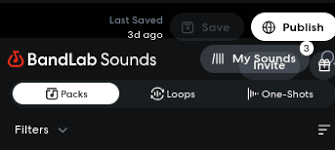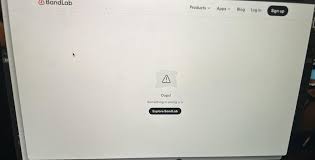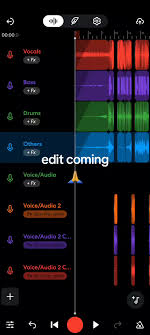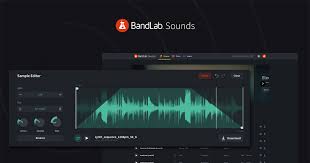If you’ve just finished recording your song in BandLab, you might notice it sounds flat, unbalanced, or muddy. That’s completely normal—raw recordings almost always need extra polish. This is where mixing and mastering come in.
Learning how to mix and master on BandLab can feel intimidating at first, but the platform makes it surprisingly approachable. With built-in effects, automation tools, and even AI-powered mastering, you can transform a rough demo into something that sounds professional—all without paying for expensive plugins or software.
This guide will walk you through mixing basics, mastering techniques, and practical tips tailored for BandLab users.
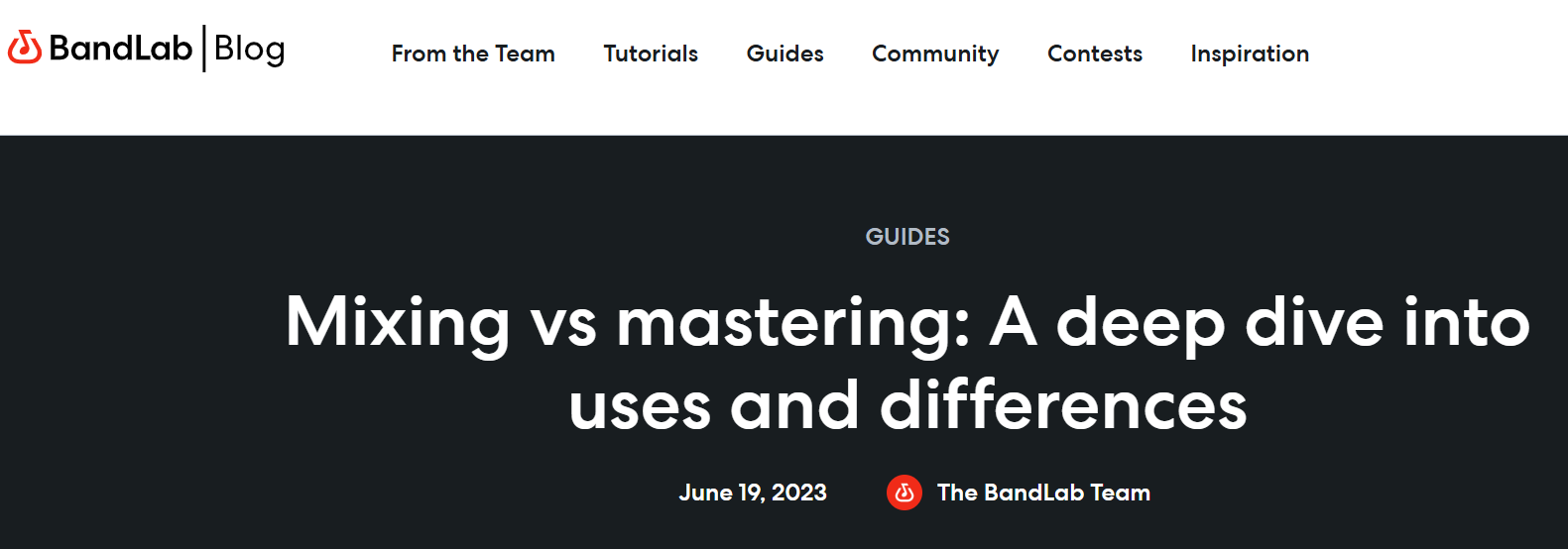
Why Mixing and Mastering Matter
Mixing and mastering are two separate but equally important stages:
Mixing is about balancing instruments, vocals, and effects so everything fits together.
Mastering is the final polish, ensuring your track sounds loud, clear, and consistent across all devices.
Even the best performance can lose impact if the mix is muddy. On the flip side, a clean mix and polished master can make a bedroom recording sound radio-ready.
Setting Up Your Project in BandLab
Before diving into effects and plugins, it’s important to start with a clean setup.
Organize Tracks – Label your tracks clearly (Vocals, Drums, Bass, Guitar).
Set Levels – Use the BandLab mixer to keep each track at a comfortable volume. Avoid peaking into the red.
Group Similar Instruments – For example, group all drum tracks under one bus so you can control them together.
Use Reference Tracks – Import a professionally mixed song in a similar genre for comparison.
This early preparation helps prevent messy sessions later.
How to Mix on BandLab
When figuring out how to mix and master on BandLab, start with these essential mixing steps:
Step 1: EQ (Equalization)
BandLab includes a Parametric EQ that lets you shape the frequency balance of your tracks.
Cut low frequencies (below 80 Hz) from vocals and guitars to reduce muddiness.
Boost around 5–8 kHz for vocals to add clarity.
Scoop out boxy frequencies around 200–400 Hz in guitars or pianos.
Step 2: Compression
Compression evens out volume differences, especially useful for vocals.
BandLab’s Compressor effect has presets like “Vocal” or “Drum Bus.”
Use light compression on vocals to keep them consistent.
Apply more aggressive compression on drums for punch.
Step 3: Reverb and Delay
Space effects like reverb and delay can make your mix sound professional.
Use Plate Reverb for vocals to add depth.
Keep reverb subtle on drums to avoid a washed-out sound.
Delay can create stereo width when applied to guitars or synths.
Step 4: Panning and Stereo Imaging
BandLab’s panning tool helps spread sounds across the stereo field.
Pan hi-hats slightly to the left or right.
Keep bass and kick centered for power.
Pan background vocals wide for a fuller mix.
Step 5: Automation
BandLab allows you to automate volume, panning, and effects.
Fade in/out sections smoothly.
Lower instrumental levels during verses to give vocals more space.
Automate reverb for dramatic build-ups before a chorus.
How to Master on BandLab
Once your mix feels balanced, it’s time to master. Mastering ensures your track is competitive in volume and tone with professional releases.
Option 1: AI-Powered Mastering
BandLab has a one-click Mastering tool (found under “Library” when exporting).
Upload your mix, choose a style (e.g., “CD Quality” or “Bass Boost”), and let BandLab process it.
This is fast and surprisingly effective for beginners.
Option 2: Manual Mastering in the Mix Editor
If you want more control:
EQ the Final Mix – Add slight boosts in highs (10–12 kHz) for sparkle.
Use a Limiter – BandLab’s Limiter effect prevents clipping and maximizes loudness.
Apply Multiband Compression – Balance low, mid, and high frequencies.
Check with Headphones and Speakers – Make sure your master sounds good across devices.
Tips for Better Mixes and Masters on BandLab
Use High-Quality Recordings: A bad recording is hard to fix in the mix.
Mix at Low Volume: If it sounds good quietly, it’ll sound even better loud.
Reference Other Songs: Compare EQ, volume, and stereo width.
Take Breaks: Ear fatigue can make you miss issues in your mix.
Export Multiple Versions: Try different mastering presets to see which sounds best.
Real Example: Mixing a Pop Vocal Track on BandLab
Imagine you’ve recorded vocals, a guitar loop, and a drum kit. Here’s how you’d approach mixing and mastering:
Vocals – Apply EQ (cut lows below 100 Hz, boost highs around 6 kHz). Add light compression and plate reverb.
Guitar – Pan slightly left, cut muddy frequencies around 300 Hz, add delay for width.
Drums – Boost kick at 60 Hz, compress snare for punch, pan hi-hats right.
Bass – Keep centered, compress to control volume spikes.
Master – Apply Limiter, slight EQ boost in highs, and finalize with BandLab’s “Clear” mastering preset.
In under an hour, you’d have a polished track ready for streaming platforms.
Conclusion: How to Mix and Master on BandLab
So, how to mix and master on BandLab? It’s a step-by-step process of cleaning, balancing, and enhancing your tracks with EQ, compression, reverb, and automation—followed by a mastering stage that brings everything up to professional quality.
The beauty of BandLab is that you don’t need third-party plugins or expensive gear. With practice, you can create mixes that stand out and masters that hold their own next to chart-topping songs.
Whether you’re a beginner or an independent artist, BandLab gives you the tools to finish your music from start to finish—all for free.
FAQ
1. Does BandLab have mastering tools?
Yes. BandLab offers free AI-powered mastering and manual mastering effects like EQ, limiter, and compressor.
2. Can I mix a full band in BandLab?
Absolutely. With multiple tracks, buses, and automation, you can mix anything from solo vocals to a full band project.
3. Do I need headphones to mix on BandLab?
Headphones are strongly recommended for accuracy, but you should also test your mix on speakers for balance.
4. What’s the difference between mixing and mastering on BandLab?
Mixing balances individual tracks, while mastering finalizes the entire mix into a polished, ready-for-release song.
5. Can I release music mastered in BandLab?
Yes. Many independent artists release BandLab-mastered tracks on Spotify, Apple Music, and YouTube.

